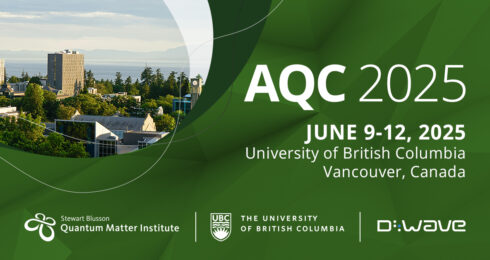A new paper from Jeff Young and Lukas Chrostowski’s teams, including first author and PhD student Xiruo Yan and postdoctoral fellow Andreas Pfenning, offers a bird’s-eye view of the road ahead for quantum computing research based on a silicon photonic platform. The paper, published recently in the journal APL Photonics, will serve as a guide as researchers sit down in September to establish some critical milestones in the Stewart Blusson Quantum Matter Institute’s Grand Challenge, Pushing the boundaries of Noisy Intermediate Scale Quantum (NISQ) computing by Focusing on Quantum Materials Problems (QCGC).
“Jeff Young, Lukas Chrostowski and Robert Raussendorf are partners with a team from Simon Fraser University (SFU) on a CFI-funded project titled ‘Silicon Quantum Leap’ that aims to use photons to interrogate and manipulate the spin of electrons in isotopically pure silicon (Si). The SFU group has identified a class of atoms and defects that have a long spin-coherence time, which makes this system an attractive platform for potentially building a scalable quantum computer,” said Pfenning.
Long spin-coherence time offers stability and long processing time for quantum information stored in the electron spin state of the defects. The ability of photons to interact with those spins enables the manipulation of that stored quantum information using optical rather than electrical “wires”, which offers engineering advantages as photons are by their nature ideal transporters of (quantum) information.
The question of how to use these long-lived spin coherence times and quantum memories is one that researchers at Blusson QMI are uniquely positioned to address. With Chrostowski’s expertise in silicon photonic components, Young’s expertise in photonic crystals and silicon quantum photonic information technology, and Raussendorf’s leadership in the field of measurement-based quantum computing, the team is working together to map out the next phase of the QCGC.
Last summer, Young and Raussendorf, with first author Xiruo Yan, proposed a fault-tolerant architecture based on this physical system that is universal and scalable. This work, published in the journal Advanced Quantum Technologies, proposed a comprehensive circuit architecture and a protocol for realizing 3D cluster states through photonic-measurement-based donor-spin-qubit entanglement and readout. The paper described a theoretical framework for quantum computing in which single photons are used to interrogate, manipulate and entangle said donor spin qubits.
Published last week, Young, Yan and Pfenning’s APL Photonics paper took Raussendorf et al’s framework and tested the ideas with one question in mind: “What kind of device properties do we need to achieve in order to actually realize this architecture on a silicon chip?”
“We’re piecing together a puzzle, and it is exciting because we have world-leading expertise in silicon devices with Lukas Chrostowski and Jeff Young, and we have one of the most renowned theoreticians in quantum computing theory with Robert Raussendorf,” said Pfenning.
“Our expertise puts us in a good position to plot achievable milestones: we have looked at the proposed architecture from different angles, studying different aspects, in an attempt to figure out how the parts work together, what is missing, and where we are at in terms of our capacity and understanding,” said Pfenning.
“We have just entered the ‘quantum advantage era’ since Google’s experimental demonstration in 2019 using superconducting qubits, and Jian-Wei Pan’s group in China in 2020 using photons,” said Yan. “The next big milestone would be to demonstrate a ‘useful’ quantum advantage. The timeline of this achievement relies on when we can scale our quantum computer to a level where it can perform a quantum algorithm of practical use and also provide quantum speed-up. With these high-quality spins in silicon, we hope we can leverage the maturing silicon photonics technology and its integrability with electronics to implement our architecture on a large scale in the long term.”
In the fall, the QCGC team will begin working to turn the current perspective into a roadmap, with the goal of establishing critical milestones in order to realize the proposed architecture.
“We now understand the most pressing needs, and this paper establishes a broad framework that we can build on in order to push this work forward,” said Pfenning.


